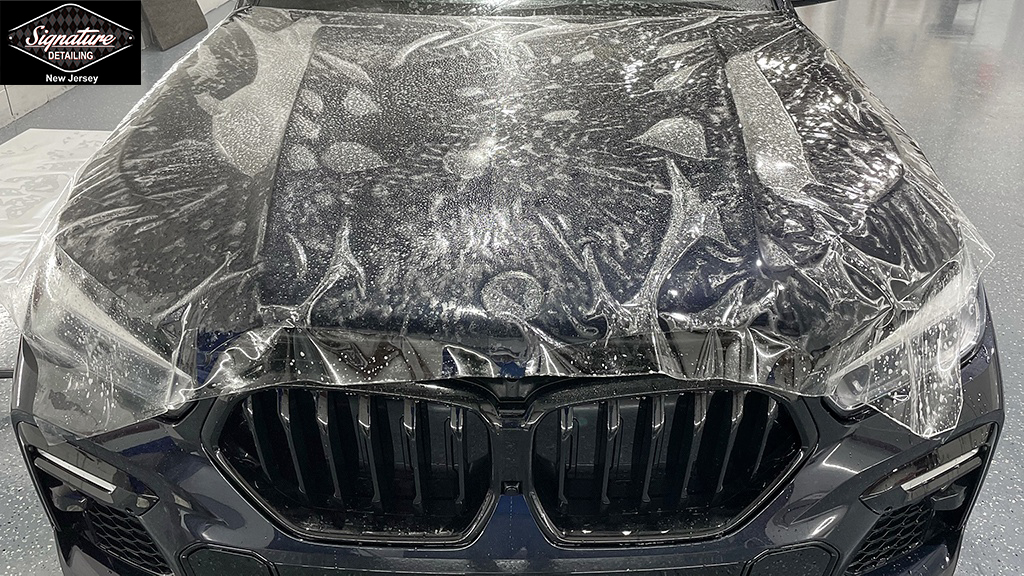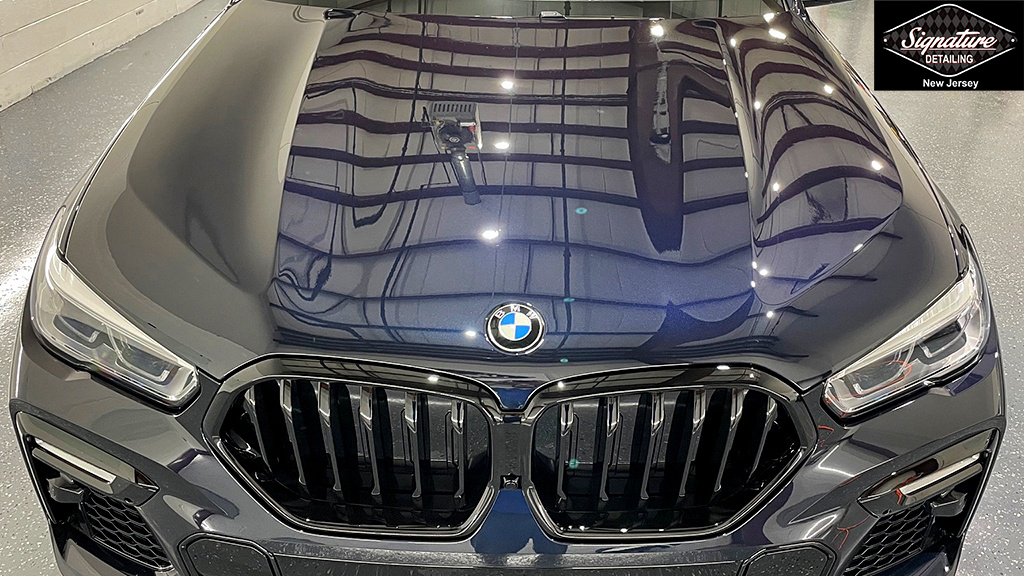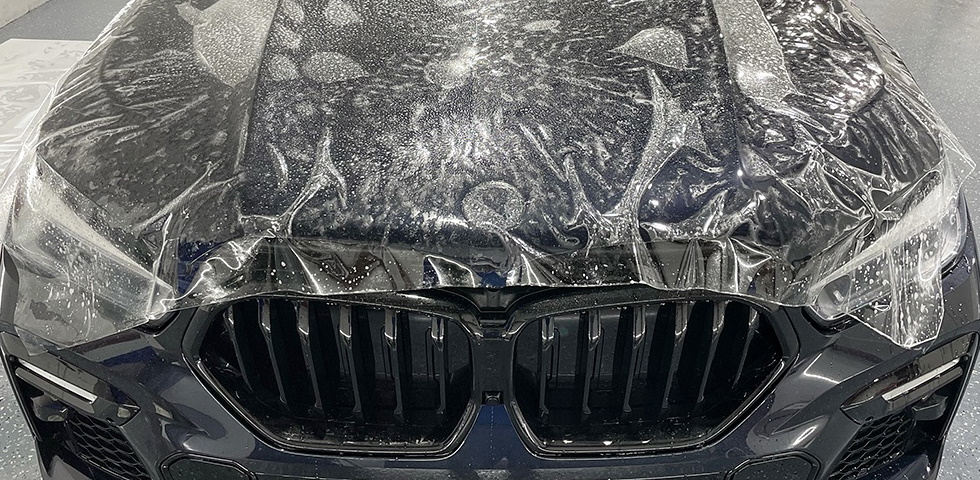
The PPF/Clear Bra installation process requires a very specific and thorough set of preparation steps in order to maximize its longevity for protection and appearance.
Typical Paint Protection Film Installation Steps
- Primary Cleaning Step: Thorough wash all exterior surfaces. Sometimes a ferrous iron removal step is necessary to remove embedded iron contaminants from within the paint’s pores.
- Secondary Cleaning Step: Mechanical decontamination of the surface with a clay bar or clay substitute.
- Third Preparation Step: Machine polishing surfaces to fully remove contamination from the paint system, to allow for better adhesion, and to improve to overall look of the film installation.
- Thoroughly Spraying down of the PPF or Clear Bra film to add lubricity while positioning the film in place.
- Properly positioning the film in place, before tacking it down, to ensure proper panel and edge protection.
- Finding the appropriate balance of solution and isopropyl alcohol to ensure the edges adhere tightly in place and do not lift over time.

Types of PPF Installation Procedures
When shopping for Paint Protection Film installation, consumers should be aware there are two types of Installation Procedures:
- Pattern Installations
- Bulk Installations (often referred to as ‘custom’)
Pattern Installations: The film arrives in bulk rolls and is placed into a machine called a plotter. It is cut by the plotter to perfectly fit the appropriate areas on the vehicle. After the film is cut it is applied to these individual surfaces. Additionally, the patterns are extended within the cutting software to allow all available edges to be wrapped.
Bulk Installations: The film is applied directly onto the panels from bulk rolls. The shape of each panel is cut out after the film is applied to the vehicle surface. For comparison, think of wrapping a present from a bulk roll of wrapping paper vs. a kit that was precut to perfectly fit the chosen gift box.
To achieve a “seamless” look for custom installations a small to a large amount of vehicle disassembly and reassembly may be required in order to ‘tuck’ film behind panel seams.
At Signature Detailing New Jersey, use pattern installations due to the safety they provide to surfaces. We wrap all available edges wherever possible. We prefer the pattern installation method due to the consistency they provide for installations, in addition to the following points:
- PPF installation projects are completed sooner, meaning vehicles are returned to owners in less time.
- There is very little potential for accidental damage that may result from cutting through the film and into the paint after the film is applied to the panel.
- Precut patterns minimize the disassembly of vehicles. This ensures vehicles remain as original and intact as possible. We mostly view this in terms of driver safety. If clips or other components are broken during vehicle disassembly, shops do not keep all vehicle manufacturer specialized clips or components in stock at all times. They may only be ordered from the manufacturer direct.
- PPF is a wear item; with a finite lifespan. If major disassembly is necessary to wrap panels and edges, the vehicle will eventually require the same level of disassembly in the future for the PPF’s removal.
- While there is always some level of stretch necessary for all PPF installations, overstretching causes some potential issues. Overstretching the PPF places too much stress on the paint system. Also, excess stretch on installed PPF can interfere with the film’s self-healing abilities. Finally, overstretching PPF has the ability to thin out the film’s thickness. This means overstretched areas have less film (mass) protecting those areas.
To read all of the articles in the Buyers Guide to PPF series, click here!
